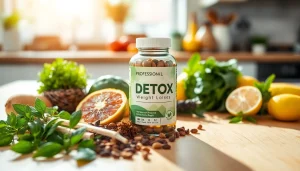Understanding Softgel Encapsulation: Techniques and Applications for Enhanced Bioavailability

Introduction to Softgel Encapsulation
Softgel encapsulation is a sophisticated delivery system for pharmaceuticals and nutraceuticals that provides a range of benefits over traditional dosage forms. By enclosing active ingredients within a gelatin shell, manufacturers can enhance bioavailability, improve stability, and ensure ease of consumption. This method has gained significant traction in the medical and wellness sectors due to its effectiveness and simplicity. If you’re interested in understanding how Softgel Encapsulation plays a critical role in modern product formulations, keep reading to explore its historical background, techniques, benefits, challenges, and future trends.
What is Softgel Encapsulation?
Softgel encapsulation refers to the process of enclosing liquid ingredients within a soft gelatin capsule. These capsules are made from a gelatin shell that provides a barrier to moisture and oxygen, safeguarding sensitive ingredients. Unlike hard capsules, softgels are often more palatable and easier to swallow, making them a preferred choice for many consumers. The encapsulated liquid can contain a variety of substances, including oils, herbs, vitamins, and pharmaceuticals.
Historical Overview
The origins of softgel capsules can be traced back to the early 20th century, with significant advancements made during the 1930s. Following initial development, softgels witnessed widespread adoption within the pharmaceutical and dietary supplement sectors. Their unique formulation capabilities and consumer-friendly design propelled them into the spotlight, paving the way for innovations and enhancements that followed. Over the decades, softgel encapsulation has evolved in response to advanced technology and an increasing understanding of consumer needs.
Importance in Pharmaceuticals
Softgel encapsulation is vital in pharmaceuticals as it facilitates the targeted delivery of active ingredients, ensures dosage accuracy, and can enhance patient compliance. The ability to incorporate both hydrophobic and hydrophilic compounds broadens the scope of its application in drug formulation. Softgels are particularly advantageous for products with low bioavailability, as they can dissolve quickly in gastrointestinal fluids, promoting faster absorption and onset of action.
Types of Softgel Encapsulation Techniques
Manual vs. Automated Processes
Softgel encapsulation can be performed through manual or automated processes, each with distinct advantages. Manual encapsulation is often used for small batches or pilot studies, allowing for more flexibility and experimentation. Conversely, automated processes enhance efficiency and quality control in mass production, reducing human error and ensuring consistent product quality. The selection of the appropriate method largely depends on the production scale, desired product attributes, and target market.
Common Materials Used
The materials employed in softgel encapsulation can significantly affect the performance and stability of the final product. Typically, gelatin, which can be derived from pork or fish sources, is the primary material for the capsule shell. Other materials such as vegetarian alternatives made from plant-based cellulose are also gaining popularity in response to consumer demand for vegan options. The fill materials vary widely, including essential oils, botanical extracts, and various active pharmaceutical ingredients (APIs).
Industry Applications
Softgel encapsulation finds applications across a diverse range of industries, including pharmaceuticals, nutritional supplements, and cosmetics. In the pharmaceutical sector, softgels are commonly used for pain relief medications, vitamins, and nutraceuticals. The nutritional supplements industry utilizes softgels for fish oil, multivitamins, and herbal extracts. Recently, the cosmetics industry has begun to explore softgel applications for topical agents, such as essential oils aimed at enhancing skin health.
Benefits of Softgel Encapsulation
Improved Bioavailability
One of the primary advantages of softgel encapsulation is the significant improvement in bioavailability. The liquid fill can facilitate faster absorption compared to solid dosage forms. This property is crucial for poorly soluble APIs, where traditional delivery methods might lead to suboptimal therapeutic effects. By effectively protecting the active ingredients and promoting enhanced solubility, softgels ensure that more of the active compound reaches systemic circulation.
Enhanced Stability
Softgel encapsulation also offers enhanced stability to sensitive compounds, particularly those that may degrade due to light, heat, or moisture. The gelatin shell acts as a protective barrier, prolonging shelf life and allowing businesses to offer products that remain potent and effective over time. This stability is particularly important for products with active ingredients that are susceptible to oxidation or hydrolysis.
Consumer Acceptance
The appeal of softgel capsules is not merely functional; they are also favored by consumers for their aesthetic qualities. Softgels are typically more palatable than hard capsules or tablets, and their smooth, gelatinous texture makes swallowing easier. Additionally, their opaque or tinted appearance can help mask unpleasant tastes or smells, enhancing overall user experience and product acceptance in the marketplace.
Challenges in Softgel Encapsulation
Production Limitations
Despite their numerous benefits, softgel encapsulation presents specific production challenges. The manufacturing process requires precise control over several parameters, including humidity, temperature, and machine settings, which can complicate production lines. Additionally, variations in raw material quality can lead to inconsistent outcomes, requiring rigorous quality control measures to ensure product integrity and compliance.
Cost Factors
Cost considerations are critical when it comes to softgel encapsulation. The initial investment in specialized equipment, proprietary technology, and trained personnel can be substantial, particularly for smaller manufacturers. Furthermore, the cost of the gelatin capsule material and the active ingredients can influence final product pricing, impacting competitiveness in an increasingly crowded marketplace.
Regulatory Compliance
Navigating regulatory requirements presents another challenge within the realm of softgel encapsulation. Compliance with stringent guidelines set by health authorities is essential to ensure product safety and efficacy. This includes thorough testing for potency, stability, and potential contaminants. Manufacturers must maintain meticulous records and adhere to Good Manufacturing Practice (GMP) standards, which can add complexity to the production process.
Future Trends in Softgel Encapsulation
Innovative Formulations
The future of softgel encapsulation is set to thrive with innovative formulations that address emerging consumer demands. Trend indicators suggest a growing interest in personalized nutrition and customized formulations, affording consumers options tailored to their unique health needs. The incorporation of new ingredients, such as cannabinoids and other novel actives, is likely to drive the development of specialized softgel products.
Technological Advancements
Advancements in technology will continue to shape the softgel encapsulation landscape. Developments in encapsulation techniques, such as microencapsulation and nanoencapsulation, may provide further enhancements in bioavailability and targeted delivery. Automation and artificial intelligence are also playing pivotal roles in scaling production and maintaining high levels of quality assurance.
Market Predictions
Market analysts predict steady growth in the softgel encapsulation sector, driven by rising health awareness and the increasing demand for dietary supplements and personalized medicine. Companies that innovate and adapt to consumer preferences are well-positioned to capitalize on this growth. As consumers become more educated about health and wellness, the need for reliable, effective delivery systems will remain paramount, making softgels a top choice.







